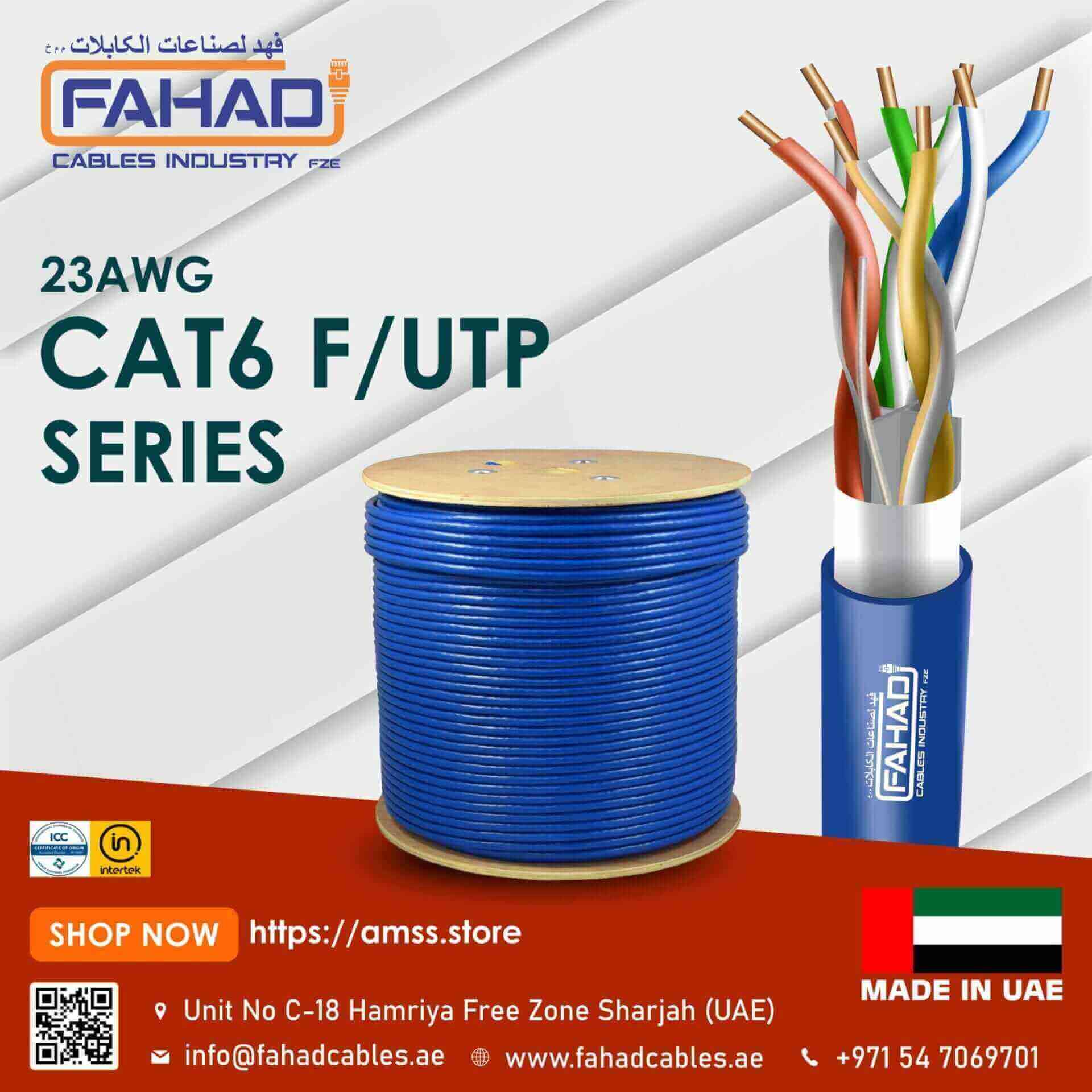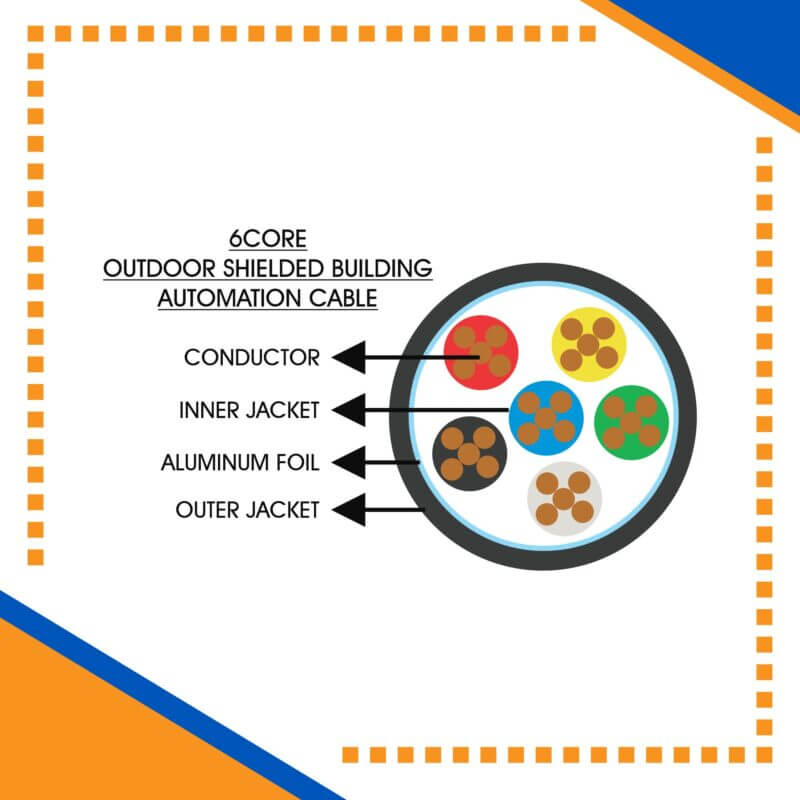Introduction to Cat6 Cables
Cat6 cables, or Category 6 cables, are a type of twisted pair cable that has become essential in modern networking, particularly in high-speed data transmission and internet connectivity. Designed to support Ethernet networks, Cat6 cables enhance the performance and speed needed for today’s demanding applications. With a capability to transmit data at speeds of up to 10 Gbps over distances of 55 meters, they have surpassed their predecessors, such as Cat5 and Cat5e cables, by providing increased bandwidth and reduced crosstalk, thereby ensuring clearer communication.Cat6 Cable Color Codes
The significance of Cat6 cables extends beyond mere speed; they play a crucial role in a variety of settings—from residential installations where high-speed internet access is paramount, to commercial environments that require robust and reliable data transmission infrastructures. Additionally, their strengthened design helps in minimizing interference and maintaining integrity during data transfers, which is vital for maintaining high network efficiency.
Understanding the color codes associated with Cat6 cables is essential for both installers and users. The color coding not only aids in the identification of each wire within the cable but also informs proper wiring connectivity in networking setups. This knowledge is particularly beneficial in organized installations, helping technicians troubleshoot potential issues with ease. Furthermore, a proper grasp of these color codes ensures adherence to standardized wiring practices, which is critical for maximizing performance efficiency in networking systems.
As networking technology continues to evolve, the importance of Cat6 cables and their respective color codes is likely to grow, underscoring the need for advanced understanding among users and installers alike. This foundational knowledge is instrumental in fostering reliable and effective network communication.
Importance of Color Codes in Network Cabling
Color coding in network cabling is fundamental to maintaining an organized and efficient cabling system. The use of distinct colors for different wire pairs in Cat6 cables provides critical visual cues that assist in identifying communication pathways. By adhering to standardized color codes, technicians and engineers can easily understand, install, and maintain complex network systems without confusion. This organization enhances efficiency, particularly in environments where multiple cables are present, such as data centers and office buildings.
Identifying wire pairs is a key function of color coding. Each pair of wires within a Cat6 cable is typically assigned a specific color combination, such as blue with blue stripes, orange with orange stripes, green with green stripes, and brown with brown stripes. Such a system facilitates proper termination, ensuring that the correct pairs are connected, which is essential for efficient data transmission. Incorrect pairing can lead to latency, data loss, or complete network failure.
In addition to aiding installation, color codes play a significant role in troubleshooting network issues. When problems arise, a well-organized cabling system allows technicians to quickly locate and identify potential faults. Issues such as broken connections or interference can be resolved more efficiently, reducing downtime and improving overall network reliability. Furthermore, clearly marked cables simplify the process of upgrading or expanding network systems, as technicians can trace and manage existing connections without the risk of causing further complications.
Overall, the systematic use of color codes in Cat6 network cabling significantly enhances the organization, efficiency, and reliability of a network. By following established color conventions, professionals in the industry can ensure proper installation and easy maintenance, thereby fostering a robust communication infrastructure.
Fahad Cables Industry FZE: An Introduction
Established as a leading entity in the cable manufacturing sector, Fahad Cables Industry FZE has built a robust reputation for delivering high-quality products, notably in the domain of Cat6 cables. With its inception dating back over a decade, the company has progressively evolved to meet the growing demands of an increasingly digital world. The focus on innovation and adherence to international manufacturing standards has solidified its position as a reliable supplier for various industries, including telecommunications and data networking.
The mission of Fahad Cables Industry FZE centers on providing exceptional cable solutions that ensure optimum performance and durability. Committed to quality, the company implements rigorous testing protocols during production, ensuring that every product meets the stringent requirements set forth by industry standards. This unwavering commitment to excellence has fostered trust among clients, facilitating long-term partnerships and contributing to the brand’s success.
Furthermore, Fahad Cables Industry FZE envisions a future where connectivity transcends boundaries, enhancing communication and efficiency on a global scale. The company constantly invests in research and development, seeking to innovate and introduce advanced cable technologies that cater to the evolving needs of its customers. By focusing on quality, integrity, and customer satisfaction, Fahad Cables Industry FZE consistently stands at the forefront of the cable manufacturing industry.
In the competitive landscape of cable production, the emphasis on Cat6 cables has particularly set Fahad Cables apart. Known for their advanced performance capabilities, Fahad’s Cat6 cables are engineered to support high-speed data transmission, making them an ideal choice for any networking application. The corporation’s dedication to producing reliable communication solutions has prompted widespread recognition and an esteemed status within the industry.
Cat6 Cable Color Codes Explained
Cat6 cables, an upgraded version of the Cat5 standard, play a crucial role in various networking applications, supporting higher speeds and bandwidths. A key aspect of Cat6 cable functionality lies in its internal wiring structure, dictated by distinct color codes that align with the T568A and T568B wiring standards. Understanding these color codes is essential for proper installation and troubleshooting.
Each Cat6 cable consists of four twisted pairs of wires, each pair serving a specific purpose in data transmission. The standard color coding identifies these pairs—paired wires are typically arranged in the following sequence: Pair 1 with white/blue and blue wires, Pair 2 with white/orange and orange wires, Pair 3 with white/green and green wires, and Pair 4 with white/brown and brown wires. This structured arrangement ensures minimal interference and optimal performance, which is paramount in high-speed networks.
The T568A and T568B standards dictate different arrangements for the same color-coded wires. The T568A standard follows the color sequence: Pair 1 (white/blue, blue), Pair 2 (white/green, green), Pair 3 (white/orange, orange), and Pair 4 (white/brown, brown). In contrast, the T568B standard reverses the order of the second and third pairs, resulting in Pair 1 (white/orange, orange), Pair 2 (white/green, green), Pair 3 (white/blue, blue), and Pair 4 (white/brown, brown). Though both standards achieve similar performance levels, consistency in wiring is key for network reliability.
In summary, properly understanding and utilizing the Cat6 cable color codes according to the T568A and T568B wiring standards is vital for effective networking. This knowledge aids in correct installations and seamless troubleshooting, reinforcing the critical role of structured cabling in today’s digital communication landscape.
Manufacturing Process of Cat6 Cables at Fahad Cables
The manufacturing of Cat6 cables at Fahad Cables Industry FZE is a detailed process that integrates advanced technology with high-quality materials to produce reliable networking solutions. At the core of this process lies the selection of premium-grade materials. These include high-performance copper wires and durable polymer insulation that ensures excellent signal transmission and minimized interference. The choice of materials significantly impacts the cable’s capability to support high-speed data transfer, making it crucial for modern communication networks.
Once the raw materials have been obtained, they undergo a series of stringent quality checks to guarantee compliance with industry standards. The copper conductors are meticulously inspected for purity and resistance, ensuring that they meet the electrical specifications required for Cat6 performance. Following this, the manufacturing process involves intricate machinery that efficiently twists pairs of wires together. This twisting is vital as it helps to reduce electromagnetic interference, thus enhancing the cable’s overall performance.
Next, the twisted pairs are surrounded by insulation, which is then coated with an outer jacket that provides additional protection against physical damage and environmental factors. The technology utilized in this phase significantly contributes to the cable’s longevity and operational efficiency. In addition to automated processes, skilled technicians monitor production closely to address any anomalies swiftly.
Quality control measures are an integral part of the manufacturing process. Each batch of Cat6 cables undergoes rigorous testing for performance standards, including tests for bandwidth, crosstalk, and attenuation. This commitment to excellence ensures that every cable produced not only meets the designated specifications but also adheres to global standards. By integrating cutting-edge technology and a steadfast focus on quality, Fahad Cables Industry FZE guarantees that its Cat6 cables deliver optimal performance for all networking applications.
Quality Standards and Certifications
Fahad Cables Industry FZE is committed to providing high-quality Cat6 cables that meet and exceed industry standards. To ensure that their products are reliable, safe, and effective, the organization adheres to a variety of quality standards and certifications that are recognized internationally. These certifications are crucial as they signify that the cables have been tested for performance and safety, instilling confidence in both distributors and end-users.
One of the primary standards adhered to by Fahad Cables is the ISO 9001 certification, which emphasizes the importance of a quality management system. This certification reflects the company’s dedication to continuous improvement and customer satisfaction in all processes, from manufacturing to customer service. Additionally, compliance with the ANSI/TIA-568 standard ensures that their Cat6 cables meet essential telecommunication performance criteria, fostering optimal data transmission rates and enhanced network reliability.
Moreover, Fahad Cables also complies with the standards set by Underwriters Laboratories (UL), which provides assurance that the products meet rigorous safety testing requirements. UL certification is a significant benchmark in the cable manufacturing industry, as it confirms that the Cat6 cables are safe for use and minimize risks associated with electrical hazards.
Furthermore, adherence to the International Electrotechnical Commission (IEC) standards ensures that the cables are compatible with various telecommunications systems worldwide. This international recognition allows Fahad Cables to widen its market reach while maintaining product credibility.
In essence, the focus on stringent quality standards and certifications not only guarantees the reliability of Fahad Cables’ Cat6 products but also reassures customers that they are investing in a product that meets global safety and performance benchmarks.
Applications of Cat6 Cables
Cat6 cables, or Category 6 cables, have become a standard in networking technology due to their high performance and versatility. These cables are particularly notable for their ability to support various applications, making them a preferred choice for both residential and commercial installations. One of the most common settings for Cat6 cables is in home networks, where they are utilized to connect various devices, including computers, gaming consoles, and smart home devices. The high bandwidth capabilities of Cat6 cables, which can reach up to 10 Gbps over short distances, ensure that households can enjoy seamless internet connectivity without compromising on speed or performance.
In addition to residential use, Cat6 cables are extensively applied in data centers, where they facilitate high-speed data transfer between servers, switches, and routers. Their design minimizes crosstalk and interference, which is critical in environments where large volumes of data are transmitted simultaneously. Furthermore, the ability of Cat6 cables to support Ethernet connections over longer distances—up to 328 feet—makes them ideal for the sprawling layouts often found in modern data centers.
Commercial installations also benefit significantly from the implementation of Cat6 cables. In office environments, these cables are used to establish reliable network infrastructures that support voice over IP (VoIP), video conferencing, and high-speed internet access. Their robustness and capacity to handle multiple users without degradation in speed make them indispensable for businesses aiming to optimize their operational efficiencies. Beyond traditional applications, Cat6 cables are also suitable for emerging technologies like IoT devices, paving the way for enhanced connectivity in smart buildings and other innovative environments. Overall, the adaptability of Cat6 cables solidifies their status as a cornerstone in contemporary networking solutions.
Tips for Selecting Cat6 Cables
When selecting Cat6 cables, several crucial factors must be considered to ensure optimal performance and reliability in network setup. One of the foremost considerations is the cable length. It is essential to choose the appropriate length to avoid signal degradation. Longer cables can lead to reduced performance, particularly beyond the recommended 100 meters. By evaluating your specific needs and measuring the distance from devices to routers or switches, you can determine the most suitable length.
Another essential factor is the type of shielding. Cat6 cables are available in both unshielded twisted pairs (UTP) and shielded twisted pairs (STP). UTP cables are adequate for most residential environments, while STP cables provide extra protection against electromagnetic interference (EMI), making them preferable for industrial or densely populated areas. Selecting the right shielding based on your environment helps maintain signal integrity and speed.
The reputation of the manufacturer is also a vital consideration. Opt for established brands known for their quality and reliability in producing Cat6 cables. Researching customer reviews and testimonials can provide insights into the performance of the cables and their durability. Additionally, ensure that the manufacturer complies with industry standards, such as the TIA/EIA-568 standards, which guarantees that the cables meet the necessary specifications for performance.
Furthermore, pay attention to the warranty offered by the manufacturer. A robust warranty indicates the manufacturer’s confidence in the product’s quality. It also protects your investment, giving you peace of mind should any issues arise after purchase. Evaluating warranty options can assist in determining the best Cat6 cable that meets both budget and performance requirements.
Conclusion and Future of Cat6 Cables
Understanding the color codes associated with Cat6 cables is crucial for anyone involved in network setup and management. These codes serve as a systematic guide that enhances clarity during installations and troubleshooting. Adequate knowledge of these color codes not only prevents potential errors but also promotes efficient communication among network professionals. As networking demands continue to evolve, familiarity with these standards equips individuals with the necessary skills to implement and maintain robust network solutions.
Looking ahead, the future of Cat6 cables, as well as other networking cables, is poised to witness significant advancements. With the rapid adoption of higher data rates and increased bandwidth requirements, there is a growing need for cables that can support these demands. Innovations such as improved insulation materials and advanced manufacturing techniques are being explored, which may lead to enhanced performance and durability. Furthermore, the shift towards fiber-optic technology is likely to influence the development of traditional copper cables like Cat6, compelling the industry to rethink their design and applicability in various settings.
Additionally, the continual improvement of networking protocols and standards will play a vital role in shaping the Cat6 cable landscape. Future variations, such as Cat6a and Cat7, will likely incorporate new technologies that ensure higher performance levels. Such advancements in network infrastructure are essential for supporting emerging technologies, including the Internet of Things (IoT), 5G, and smart home applications. Overall, staying informed about the color codes and ongoing innovations in networking cables will be crucial for professionals, ensuring that they are well-prepared to meet the dynamically evolving standards in the telecommunications industry.



